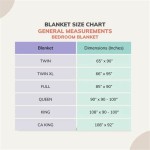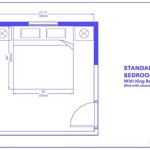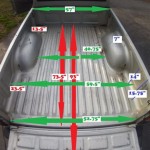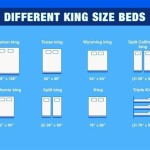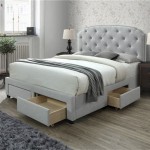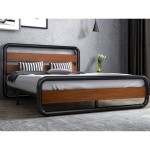```html
What Are The Dimensions of a King Size Bed?
The king size bed stands as one of the most popular choices for couples and individuals who prioritize space and comfort during sleep. Understanding the precise dimensions of a king size bed is crucial when planning bedroom layouts, selecting appropriate bedding, and ensuring compatibility with existing furniture. This article provides a comprehensive overview of king size bed dimensions, exploring standard measurements, variations, and related considerations.
Standard King Size Bed Dimensions
The term "king size bed" generally refers to a bed with standard dimensions of 76 inches wide and 80 inches long. These measurements are considered the industry standard and are widely adopted by manufacturers. This substantial sleeping surface offers significant room for two adults to sleep comfortably without feeling cramped. The expansive width also makes it beneficial for individuals who tend to move around or prefer more personal space during the night. The 80-inch length accommodates most adults comfortably, ensuring ample legroom.
It’s important to note that while 76 inches by 80 inches are the standard dimensions, slight variations can occur depending on the manufacturer or specific bed frame design. These variations are typically minor, usually within an inch or two of the standard measurements. When planning a bedroom setup, it's always advisable to consult the specific product details provided by the manufacturer to ensure accurate fitting and avoid potential compatibility issues.
The rectangular shape of the king size bed provides a balanced and symmetrical aesthetic within the bedroom. Its large footprint makes it a focal point, contributing to a luxurious and spacious feel. The size also provides practical benefits, such as accommodating multiple pillows and allowing for individual sleeping positions without disturbing a partner.
Variations of King Size Beds: California King
While the standard king size bed offers ample space, another popular variation caters to taller individuals or those who prefer a different proportion. This variation is known as the California king size bed, often abbreviated as Cal king. The California king is characterized by its narrower width and greater length compared to the standard king.
The dimensions of a California king size bed are typically 72 inches wide and 84 inches long. This means it is 4 inches narrower than the standard king but 4 inches longer. This trade-off in width for length makes the California king an ideal choice for taller sleepers who require extra legroom. The added length prevents feet from hanging off the end of the bed, promoting more restful sleep.
The California king is particularly popular in the western United States, hence its name. However, its appeal extends beyond geographical location to anyone seeking a longer bed. When deciding between a standard king and a California king, it's crucial to consider the height of the individuals who will be using the bed. If height is a primary concern, the California king is likely the better option. However, if maximizing width is more important, the standard king should be considered.
The dimensions also impact the availability and selection of bedding. While both standard king and California king bedding are readily available, the standard king offers a wider range of options due to its greater popularity. Sourcing specific styles or designs for California king bedding may require a bit more effort, although online retailers often provide a comprehensive selection catering to both sizes.
Considerations for Bedroom Size and Layout
Before committing to a king size bed, whether standard or California king, it is essential to assess the dimensions of the bedroom. A king size bed requires a substantial amount of floor space, and overcrowding the room can lead to a cluttered and uncomfortable environment. Careful planning can help to avoid any potential issues before purchasing the bed.
As a general guideline, a bedroom should measure at least 12 feet by 12 feet to comfortably accommodate a king size bed along with other essential furniture items such as nightstands, dressers, and walking space. This minimum size ensures enough room to move around the bed without feeling restricted. However, the ideal bedroom size is even larger, allowing for a more spacious and luxurious feel.
When planning the layout, consider the placement of the bed in relation to other furniture and architectural features such as windows and doors. Avoid positioning the bed in a way that obstructs walkways or blocks access to closets or other essential areas. Aim for a balanced and symmetrical layout that promotes a sense of harmony and visual appeal.
Consider the bed frame's footprint in addition to the mattress dimensions. Different bed frames can add several inches to the overall size of the bed, impacting the space required. Platform beds, for example, may have a wider frame than traditional bed frames with headboards and footboards. Always factor in the complete dimensions of the bed frame to ensure accurate planning.
Accessibility is another important consideration. Ensure that there is enough clearance around the bed to easily make the bed, change linens, and clean the floor. Narrow walkways or tight corners can make these tasks difficult and inconvenient. A well-planned layout not only enhances the aesthetic appeal of the bedroom but also improves its functionality and usability.
Bedding and Accessories
Once the dimensions of the king size bed are determined, selecting appropriate bedding and accessories is essential. King size mattresses require king size sheets, comforters, duvet covers, and pillowcases. Using bedding that is too small can result in a poor fit and discomfort, while bedding that is too large can appear sloppy and ill-fitting.
King size sheet sets typically include a fitted sheet, a flat sheet, and either two or four pillowcases. The fitted sheet should have deep pockets to accommodate the thickness of the mattress, especially if a mattress topper is used. The flat sheet should be large enough to provide ample coverage and prevent the fitted sheet from becoming exposed during sleep.
Comforters and duvet covers should also be sized appropriately to provide adequate warmth and coverage. A comforter that is too small may not fully cover the bed, leaving areas exposed to the cold. A comforter that is too large may drag on the floor, becoming dirty or damaged. King size comforters typically measure around 104 inches wide and 88 inches long, but variations may occur depending on the brand and style.
The selection of pillows and pillowcases also plays a significant role in overall comfort and aesthetics. King size beds typically accommodate two or three king size pillows, which are longer than standard pillows. Using the correct size pillowcases ensures a snug fit and prevents the pillows from slipping out during sleep. Experimenting with different types of pillows, such as memory foam, down, or alternative fills, can help to customize the sleeping experience and provide optimal support.
Beyond bedding, accessories such as bed skirts, throw pillows, and blankets can add style and personality to the bedroom. A bed skirt can conceal the bed frame and box spring, creating a more finished and polished look. Throw pillows can add pops of color and texture, enhancing the overall aesthetic appeal. A cozy blanket can provide extra warmth and comfort during colder months.
Alternatives to King Size Beds
While king size beds are often the preferred choice for couples and individuals seeking ample space, alternative options may be more suitable for smaller bedrooms or specific needs. Queen size beds offer a compromise between space and comfort, providing enough room for two adults without overwhelming smaller spaces.
A queen size bed typically measures 60 inches wide and 80 inches long, making it 16 inches narrower than a standard king size bed. This reduction in width can make a significant difference in smaller bedrooms, freeing up valuable floor space. Queen size beds are also generally less expensive than king size beds, making them a budget-friendly option.
Full size beds, also known as double beds, provide even more space savings. A full size bed typically measures 54 inches wide and 75 inches long, making it suitable for single sleepers or couples who prefer a more intimate sleeping arrangement. Full size beds are also a good choice for guest rooms or children's bedrooms.
Twin size beds are the smallest standard bed size, typically measuring 38 inches wide and 75 inches long. Twin size beds are ideal for children's bedrooms, dorm rooms, or small guest rooms. They are also often used in bunk beds or trundle beds to maximize space efficiency.
The choice between a king size bed and alternative options depends on several factors, including the size of the bedroom, the number of sleepers, budget considerations, and personal preferences. Carefully evaluating these factors can help to determine the most appropriate bed size for individual needs and circumstances.
```
Uk Bed Sizes Guide For Every Bedroom Layout

King Size Bed Dimensions Guide Dreamcloud

King Size Bed Dimensions Compare Mattress Sizes

Bed Size Guide Mattress Dimensions Australia

Mattress Size Guide Measurements Template 2025 M F Mainfoam Limited

Mattress Sizes Chart

Size Bed Dimensions Metric
King Size Mattress Dimensions Ultimate Information You Need Avenco

King Vs Full Mattress Sizes Dimensions Pros And Cons Explained Mlilyusa

Mattress Sizes And Dimensions Guide 2025 Best Brand

